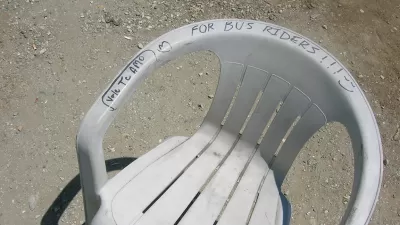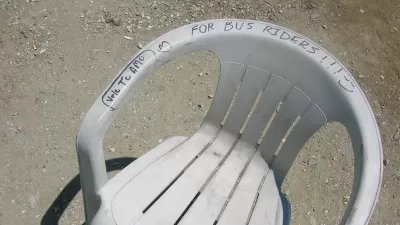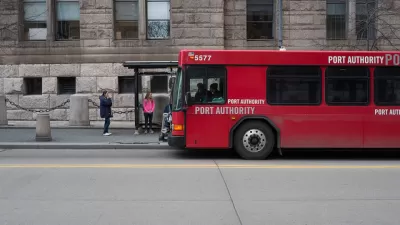Transit systems faced with decreasing ridership could accommodate access to the most widely available form of transit by building bus shelters. The federal infrastructure bill provides a big opportunity to do so.

An article by Ian Duncan for the Washington Post explains the importance of bus shelters to transit users—rain or shine, a quality bus stop is the key to the transit experience, and it's often those from marginalized communities that deal with the worst facilities while waiting for the bus.
A lack of quality bus shelters is not specific to any one location. According to a Washington Post analysis reported by Duncan, “Less than one-fifth of more than 122,000 bus stops served by 16 of the nation’s largest transit agencies have shelters.” New Jersey Transit, the New York MTA, and the WMATA systems have the biggest disparities in terms of the raw numbers of unsheltered bus stops.
The 2021 Infrastructure Investment and Jobs Act promised a new wave of funding to bridge the gap, with a potential substantive equity component riding on the potential investment.
“As record levels of federal transit funding begin to flow from last year’s $1 trillion infrastructure package, plans for thousands of new shelters present a test of whether Washington’s promises to focus on racial equity and the environment can quickly translate into benefits for transit users,” writes Duncan. According to the article, $109 billion of that total is expected for transit projects.
“Many large transit agencies are planning for more shelters as they redesign bus networks, aiming to make the most widely available form of transit more appealing. The Department of Transportation is seeking to encourage those efforts, helping cities find ways to tap highway funding to rebuild sidewalks and improve bus access,” adds Duncan.
The source article, linked below, includes specific details about plans to add bus shelters in Boston, New Orleans, Baltimore, and Houston. The city of Los Angeles is also cited as an example of the challenges of improving bus shelters.
“Jessica Meaney, founder of Investing in Place, an advocacy group in Los Angeles, said the city’s sidewalks often don’t comply with requirements of the Americans With Disabilities Act, making it difficult to get more shelters installed. A sidewalk must be eight feet wide to accommodate a shelter, according to LA Metro.”
FULL STORY: Nation’s neglected bus stops pose early test for infrastructure money

Alabama: Trump Terminates Settlements for Black Communities Harmed By Raw Sewage
Trump deemed the landmark civil rights agreement “illegal DEI and environmental justice policy.”

Study: Maui’s Plan to Convert Vacation Rentals to Long-Term Housing Could Cause Nearly $1 Billion Economic Loss
The plan would reduce visitor accommodation by 25% resulting in 1,900 jobs lost.

Planetizen Federal Action Tracker
A weekly monitor of how Trump’s orders and actions are impacting planners and planning in America.

Wind Energy on the Rise Despite Federal Policy Reversal
The Trump administration is revoking federal support for renewable energy, but demand for new projects continues unabated.

Passengers Flock to Caltrain After Electrification
The new electric trains are running faster and more reliably, leading to strong ridership growth on the Bay Area rail system.

Texas Churches Rally Behind ‘Yes in God’s Back Yard’ Legislation
Religious leaders want the state to reduce zoning regulations to streamline leasing church-owned land to housing developers.
Urban Design for Planners 1: Software Tools
This six-course series explores essential urban design concepts using open source software and equips planners with the tools they need to participate fully in the urban design process.
Planning for Universal Design
Learn the tools for implementing Universal Design in planning regulations.
Caltrans
Smith Gee Studio
Institute for Housing and Urban Development Studies (IHS)
City of Grandview
Harvard GSD Executive Education
Toledo-Lucas County Plan Commissions
Salt Lake City
NYU Wagner Graduate School of Public Service





























